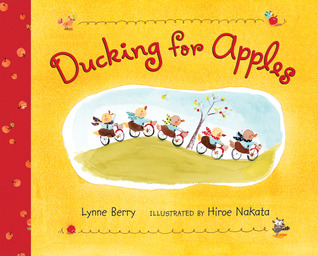After following along to our welcoming bean bag song, we got started reading our first story. Principal Fred Won't Go to Bed by Carolyn Crimi is somewhat on the long side for a younger group, but because of it's clever rhyming and adventurous story line, the group stayed entertained. It's also pretty humorous to see a principal having a tantrum over his missing teddy bear.
Once Principal Fred found his teddy, we used the flannel board for "teddy bear plays ball." I handed out different colored circle "balls" and when their color was called, they brought their ball up to the board for the teddy bear to play. We had all different colors up there and practiced our color recognition and counting.
Our next book was A Beginner's Guide to Bear Spotting by Michelle Robinson. What a sarcastic book on how to find bears and most importantly, which ones to watch out for. There are both forest bears and a teddy bear in this story.
I like how I can use a book and incorporate it for an activity. For our last teddy bear activity, we did just that. While reading Teddy Bear, Teddy Bear Turn Around by Penny Dann, we stood up and followed along with the movements. I did have to make up some of my own movements at the end to make the activity a little bit longer and to avoid the prayer movement as to not offend anyone. This was good to get everyone moving and more of those sillies to be shaken out.
Our last book was Everybody Has a Teddy by Virginia Kroll. This has got to be one of the sweetest children's books on teddy bears. It's also short and sweet to end story time.
For our craft, we made a Corduroy-inspired teddy bear craft made out of construction paper.
It's time to cuddle with a teddy and take a nap.

















